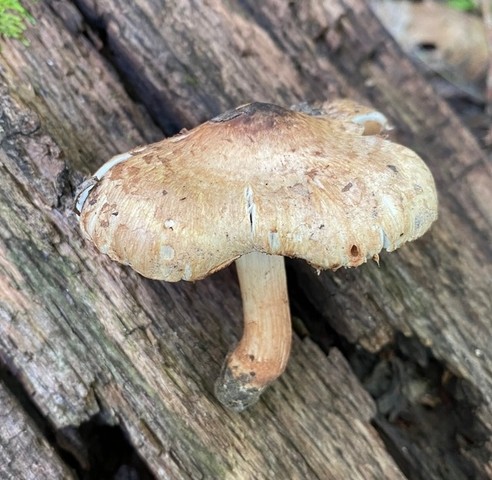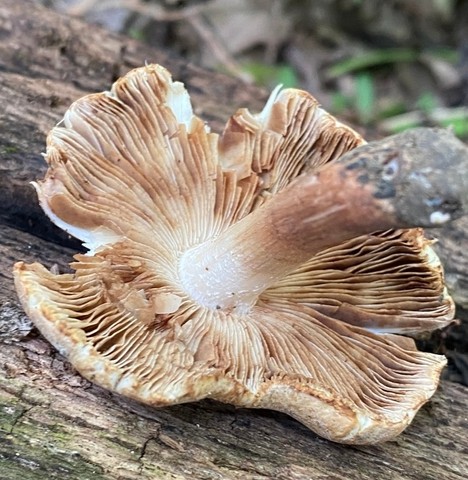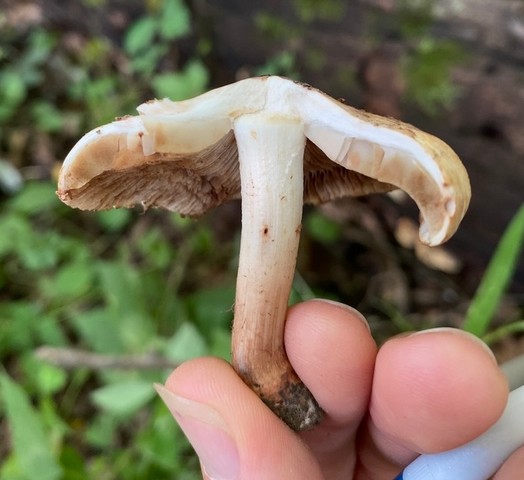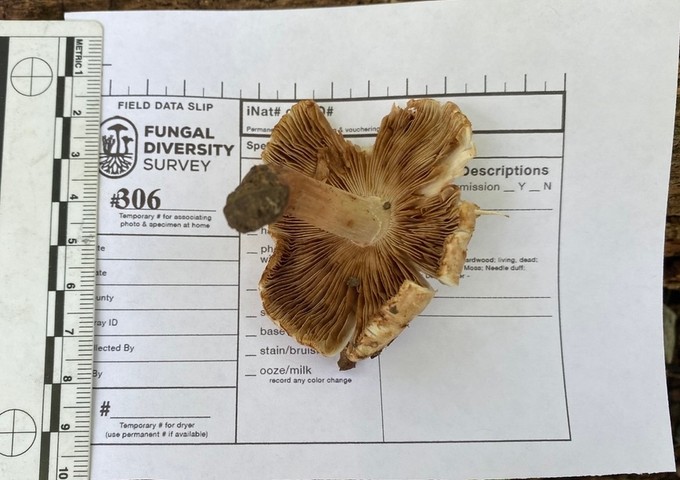Sweet-Smelling Fibercap
Inocybe dulciolens
Life > Fungi > Basidiomycota > Agaricomycotina > Agaricomycetes > Agaricomycetidae > Agaricales > Agaricineae > Inocybaceae > Inocybe
Description
The Sweet-Smelling Fibercap (Inocybe dulciolens) is a mycorrhizal mushroom that can be found from summer through fall. It is distributed east of the Rocky Mountains and generally associates with deciduous trees in soils that are high in calcium carbonate. Occasionally fruiting in large numbers.
The species name dulciolens means "sweet-smelling" representing its sweet and spicy smell.
Members of these genus are known to be toxic. The toxin in question called muscarine. Please review the list of symptoms below.
The symptoms usually occur within 15-30 minutes of ingestion, and are focused on the involuntary nervous system. They include excessive salivation, sweating, tears, lactation (in pregnant women), plus severe vomiting and diarrhea. These symptoms may be accompanied by visual disturbances, irregular pulse, decreased blood pressure, and difficulty breathing. Victims normally recover within 24 hours, but severe cases may result in death due to respiratory failure. Atropine is a specific antidote, but must be administered by a physician. Dogs are particularly susceptible to the toxin muscarine. (Beug, 2024)
If you or someone you know has been poisoned by consuming wild mushrooms, call 9-1-1 and get the individual medical attention IMMEDIATELY. Afterwards, please report poisonings to the North American Mycological Association to contribute to our understanding of wild mushroom safety.
Observations
August 16th, 2023 Indian Cave State Park

306
Growing on a ridgetop in mixed oak/hickory woodland.
Nearby trees: Chikapin oak, northern red oak, shagbark hickory, elm, black oak, red mulberry, ironwood.
- Squamuals on cap surface.
- Smell: fragrant and pleasant (somewhat reminiscent of "electrical burn" smell or Big Red Gum)
- Taste: faint to not distinctive
- Gills attached.
GTCGTAACAAGGTTTCCGTAGGTGAACCTGCGGAAGGATCATTATTGAATAAACTTGAACAGGCTGTTGCTGGCCCTTAGGGGTATGTGCACGCTTGTCATCTTTATTTCTCCAACTGTGCACATATTGTAGACCTGGTTGTTGTTGATTTTGTTATCGAGTTGGAACTGCTACTGCTGTTGCTGTTGCTTTTCCTTGAAATCCTTTCCAGGTCTATGTACCTTTTTTCACAAACCTATGAATCTGTTTAGAATAACAAAGTTGAATTTAAATATACAACTTTCAGCAACGGATCTCTTGGCTCTCGCATCGATGAAGAACGCAGCGAAATGCGATAAGTAATGTGAATTGCAGAATTCAGTGAATCATCGAATCTTTGAACGCATCTTGCGCTCCTTGGTATTCCTTGGAGCATGCCTGTTTGAGTGTCATTCAAGTTCTCAAACCACATTGATTGTGGCTTGGATGTGGGGGGGGTTTGCAGGCCTTTTTTGTGAGGGTCAGCTCCCCTGAAATGCATTAGCGGTATCTGAGCAGGGAAACTACCACAGGTGTGATAAATTTATCTATGCCTTGGTGAGCTGCATGAACAGATTGTGCTGCTTATAACCATATTTTGATGAAATTTGACCTCAAATCAGGTAGGACTACCCGCTGAACTTView MycoMap DNA Results
References
Beug, M. (2024, April 23). Mushroom Poisoning Syndromes - North American Mycological Association. North American Mycological Association. https://namyco.org/interests/toxicology/mushroom-poisoning-syndromes/#muscarine
Matheny, P. B., & Kudzma, L. V. (2019). New species of Inocybe (Inocybaceae) from eastern North America1. The Journal of the Torrey Botanical Society, 146(3), 213-235. http://www.inocybaceae.org/PDF/Matheny_Kudzma_NewInocybe_EasternNA.2019.pdf
Created December 15, 2025 at 10:41 AM


